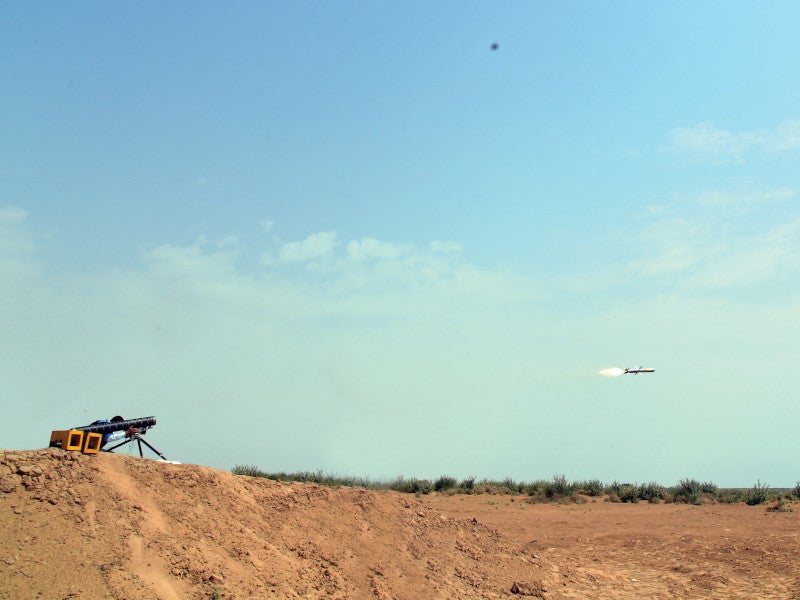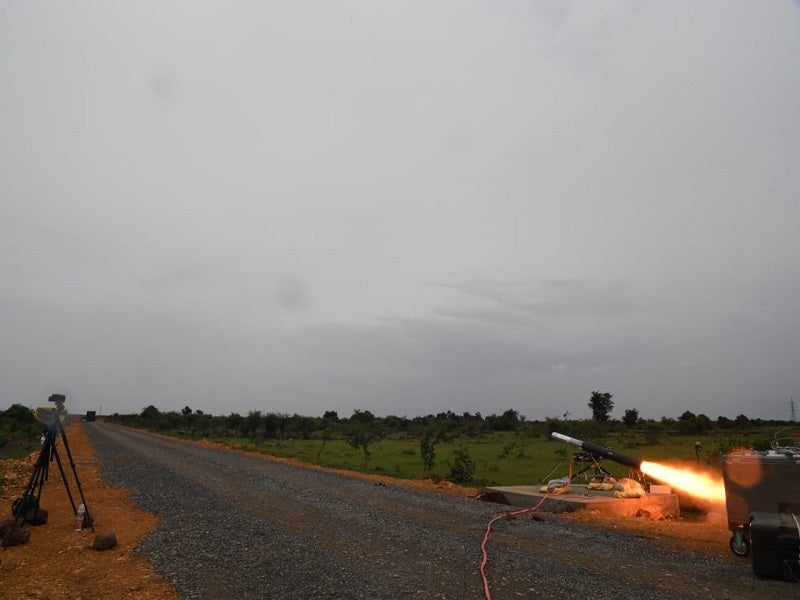The man-portable anti-tank guided missile (MPATGM) system is a lightweight, fire-and-forget weapon designed and developed indigenously by the Defence Research & Development Organisation (DRDO), an agency under the Government of India, for the Indian Army.
The MPATGM weapon system has undergone multiple missile-firing trials to meet the full operational requirements specified in the General Staff Qualitative Requirements for the Infantry of the Indian Army.
The system is now ready for final user evaluation trials before it joins the Indian Army, following the technology development and successful demonstration.
The MPATGM system represents a significant advancement towards India’s Atmanirbhar Bharat initiative aimed at the development of advanced technology-based defence systems indigenously.
Man-portable anti-tank guided missile design and features
The weapon system includes the MPATGM, a launcher, a target acquisition system, and a fire control unit.
The MPATGM system measures 1.3m in length, has a diameter of 120mm and a weight of 14.5kg.
The missile is engineered for a maximum range of 2.5m, with a maximum flight time of 17 seconds. It is equipped with a miniaturised infrared imaging seeker (IIR) for homing in on the target and advanced avionics to handle onboard control and guidance.
The missile is softly launched using a tripod from a canister utilising an ejection motor. It boasts both day/night and top attack capabilities.
With its dual-mode seeker functionality, it offers a significant enhancement to the missile’s effectiveness in tank warfare.
Propulsion capabilities of the MPATGM
The MPATGM system features dual-thrust propulsion with a blast tube and initiates the main motor ignition at a distance greater than 9m from the gunner.
MPATGM system flight test details
In September 2018, the MPATGM underwent two successful flight tests at the Ahmednagar range in Maharashtra, demonstrating its capability across various distances, including the maximum range.
DRDO conducted two successful test firings of the MPATGM within the Rajasthan desert’s testing grounds in March 2019. The missile system struck its designated targets accurately in both tests precisely at different ranges.
Another successful flight test of the system was conducted by DRDO in July 2021. The missile was fired from a man-portable launcher equipped with a thermal sight, targeting a simulated tank.
Operating in direct attack mode, the MPATGM precisely struck and destroyed the target. The test affirmed the missile’s minimum range capability.
Final deliverable configuration flight tests
In January 2022, DRDO successfully conducted the flight test of the MPATGM in its final deliverable configuration.
The test aimed to demonstrate steady performance within the minimum range. The MPATGM was launched from a handheld launcher with an integrated thermal sight.
All mission objectives were successfully achieved and the missile system hit and destroyed its designated target with precision.
The final impact was captured on camera, confirming the successful validation of the minimum range during the test.
Warhead flight trials of MPATGM
In April 2024, the warhead flight trials of the MPATGM system were successfully carried out at the Pokhran Field Firing Range in Rajasthan. The missile and warhead performed remarkably well.
The penetration trials of the tandem warhead system on the MPATGM were completed, demonstrating its capability to defeat modern armour-protected main battle tanks.






